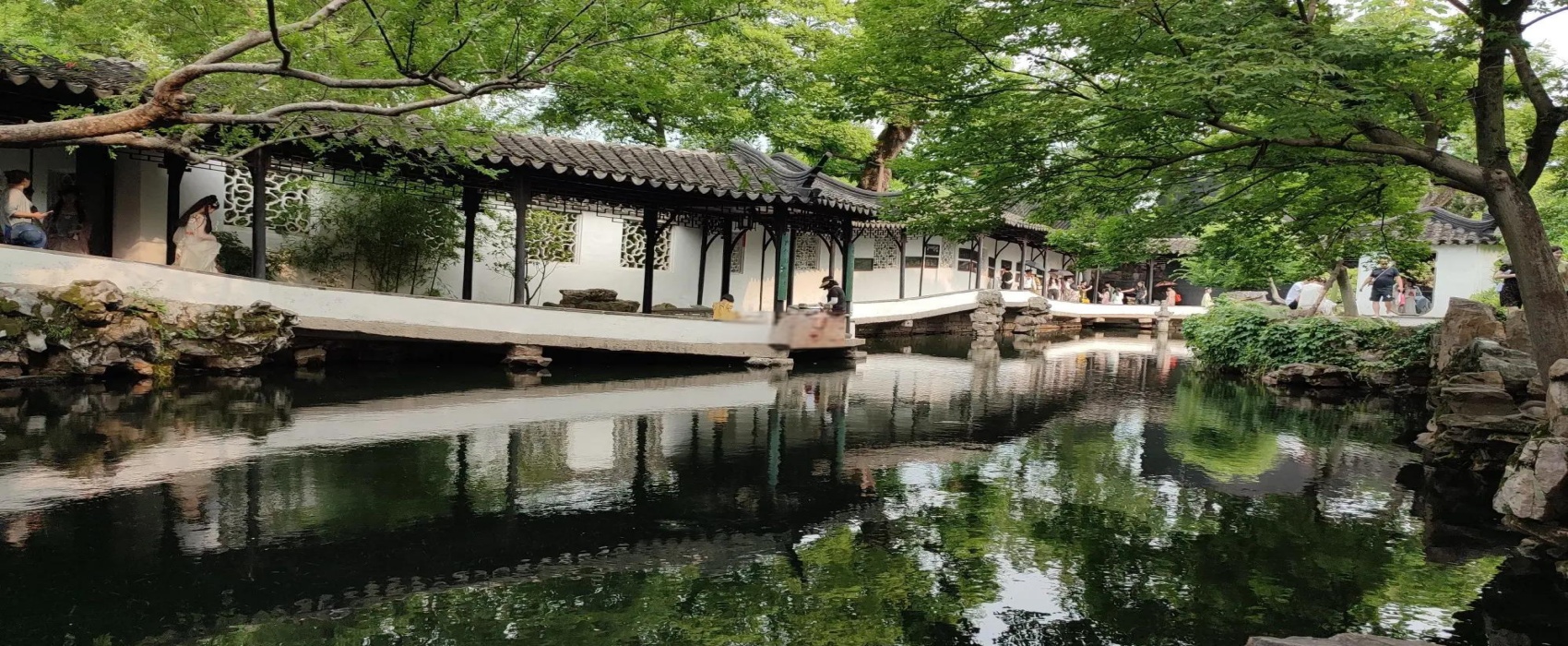Suzhou, a beautiful water city in Jiangsu Province in southern China, is renowned for its elegant classical gardens. Among these, the Humble Administrator’s Garden, covering approximately 52,000 square meters (12.85 acres), is the largest and most celebrated. Due to its unique design and ethereal beauty, the garden has received numerous special honors. It is listed as a World Cultural Heritage Site, a National Key Cultural Relic Protection Unit, and a Special Tourist Attraction in China. It is considered one of China’s Four Great Gardens, along with the Summer Palace in Beijing, the Mountain Resort in Chengde, Hebei Province, and the Lingering Garden in Suzhou. No other classical garden in China has received as many honors as the Humble Administrator’s Garden.
The Humble Administrator’s Garden was built in 1509 during the Ming Dynasty (1368-1644) as the private garden of Wang Xianchen, an official. Legend has it that Wang Xianchen, frustrated with his career, planned to build a garden after retirement, planting trees and vegetables and living a simple life. He believed that a humble person like him would live a simple life, hence the garden’s name. Built on the site of a former residence and a Taoist temple, the Humble Administrator’s Garden features a waterscape as its primary backdrop, complemented by natural features such as groves, hills, and unusually shaped rocks, as well as man-made pavilions and towers. Unlike other famous Beijing gardens like the Grand View Garden, the Humble Administrator’s Garden is a representative example of Ming Dynasty architectural style.
The garden consists of three sections: East, Central, and West. It also retains some of the original owner’s residences. These residences are typical Suzhou dwellings, with architectural styles similar to those of Zhouzhuang, a famous water village outside Suzhou. The remains of the original residences have now been converted into a garden museum.
1. East District
The East District boasts rolling hills, lush grass, bamboo forests, and winding streams. The main building is Lanxue Hall, whose south wall features a panoramic view of the garden. Also within the garden is the Hibiscus Pavilion, half built on water and half on a terrace, making it a perfect spot for viewing lotus flowers in summer. Another impressive structure is the Tianquan Pavilion, named after an ancient well with sweet water.
2. Central Area
The central courtyard is the true heart of the garden, one-third of its surface area covered by water. Lush trees and elegant pavilions and terraces abound in the garden. Yuanxiang Hall, the garden’s main structure, is named after the nearby lotus pond. In summer, the lotus flowers bloom in the pond, wafting their delicate fragrance into the hall. Yuanxiang Hall is surrounded by oversized glass windows for easy viewing. Nearby is the rare Xiaofeihong Bridge, the only pedestrian bridge in the garden.
3. West District
The main building of the West Garden is a magnificent and ornately decorated hall, divided into two sections by a vast screen. To the south lies the Eighteen Mandala Flower Pavilion, and to the north lies the Scattered Mandarin Duck Pavilion. Nearby, beside a pond used for duck feeding, stands the octagonal Pagoda Shadow Pavilion, creating an optical illusion: it appears as if a pagoda is rising, but in reality, it is only the pavilion’s reflection.
In recent years, the Humble Administrator’s Garden has hosted numerous flower exhibitions, including the Azalea and Lotus Festivals each spring and summer. The West Garden’s Bonsai Garden hosts bonsai exhibitions, while the Central Garden’s Yashizhai exhibits precious Chinese stones.
4. Recommended Nearby Attractions
Next to the Humble Administrator’s Garden is the Suzhou Garden Museum, China’s first museum dedicated to classical Chinese gardens, covering an area of 0.79 acres (3,205 square kilometers). The museum consists of five exhibition halls, including an introductory hall and four other halls, each showcasing the history, art, culture, and heritage of Suzhou gardens. It showcases traditional gardening techniques and maximally conveys the artistic charm of Suzhou gardens. After a stroll through the Humble Administrator’s Garden, this is a must-see.
Afterwards, you might want to visit the nearby Suzhou Museum, a popular local museum renowned for its rich collection of Ming and Qing dynasty artifacts. Also within walking distance is the Lion Grove Garden, a renowned classical garden with a distinctive style. Pingjiang Road is a distinctive ancient street where you can sample authentic Suzhou snacks and immerse yourself in the waterside culture.


